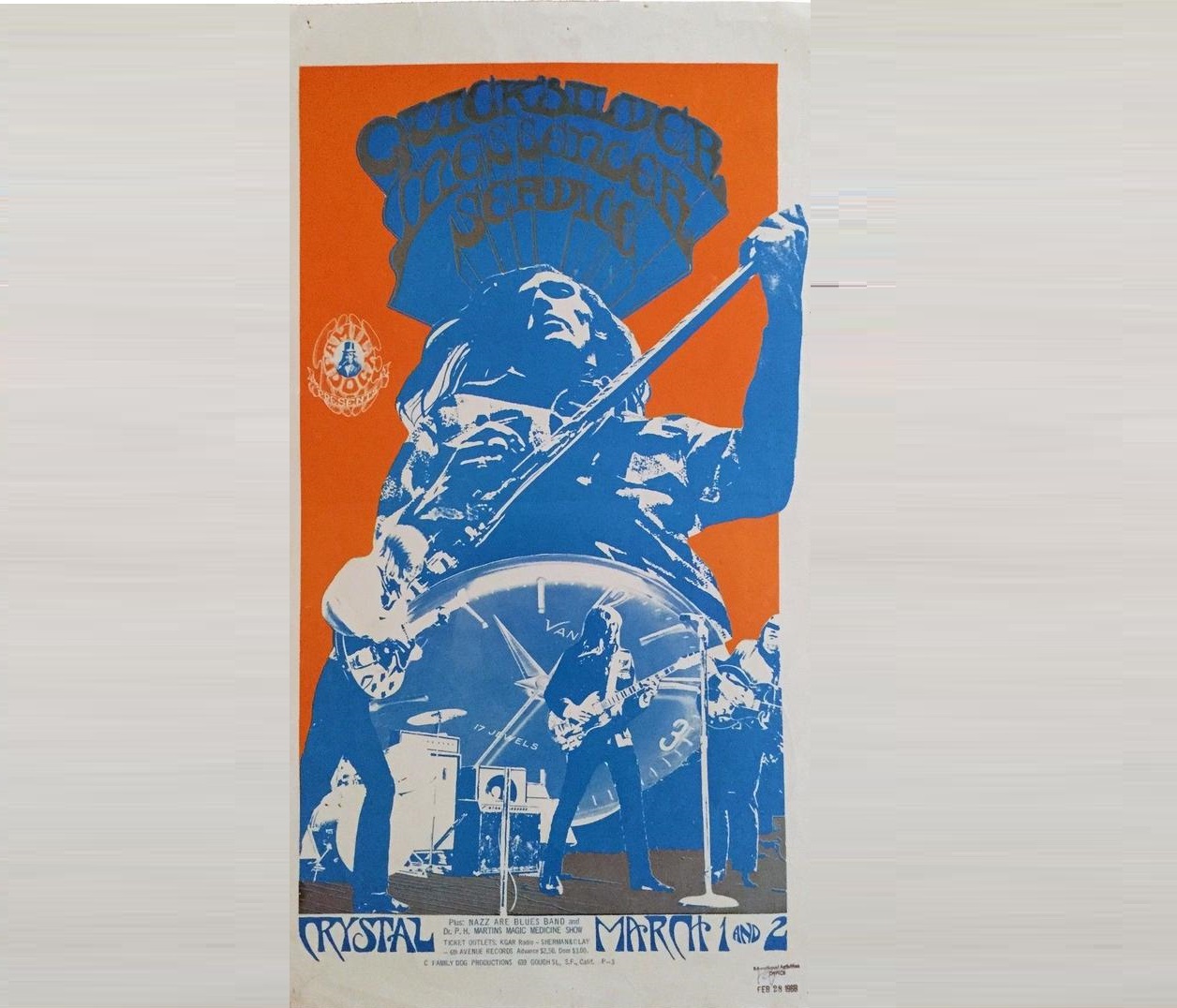The Family Dog Crystal Ball Room was an iconic venue from the early days of Portland, Oregon’s rock music scene. This extraordinary environment not only contributed to a new ethos and style in the 60’s and 70s, it also became home for those who sought both artistic freedom and a sense of belonging. Familu Dog’s reputation for hosting some of the most innovative performances in its time made it synonymous with creativity, freedom and the tremendous power of music.
In this article, we will review the history of the venue that helped make Portland an elite destination for music culture and explore its continuing influence. From the psychedelic art that adorned its walls to the legendary performances that defined a generation, the Family Dog Crystal Ball Room remains an unforgettable chapter in the city’s musical history.
The History of Family Dog Crystal Ball Room
The Crystal Ball Room was already a nexus for Portland culture before the late 1960 s when Family Dog got hold of it. It originally opened in 1914 and had been used for dances, social events, and live performances of all kinds. The San Francisco-based group of musicians and cultural revolutionaries played a role in bringing music to the 1960s Crystal Ball Room ‘s status as legend.
Known originally as a group of countercultural musicians that came from San Francisco, the Family Dog was responsible for promoting music that would express the hippie ideals. Chet Helms is the acknowledged leader of this collective, and their concerts were attempts to embody those very feelings he sought to capture in his songs — sacrifice for art’s sake, freedom, and communal living. After achieving success in the Bay Area with their acts for example at Avalon Ballroom, the Family Dog looked to increase its influence through Portland’s music scene.There seemed potential in just how much these kids at this corner of America could be influenced through radios and sound systems on nights when you went two floors below ground level into their glistening new waves beginning with gentle jazz music from miles out.
After Family Dog took over Crystal Ball Room, they turned it into a psychedelic guided tour that would have made any old hippie weep with joy. There were trippy light shows, surrealistic posters and an atmosphere that called for total artistic improvisation!In this totally unique environment attracted many of the biggest names in rock and psychedelic music in very short order. The Family Dog became a music lover’s place to go.
A Headline Act and Its Social Impact
The Family Dog Crystal Ball Room became a magnet for psychedelic rock, folkies and improvisational music. Its stage hosted many legendary names, bringing Portland sound never tasted like before!
Famous Artists and Performances
The Grateful Dead: A hub of the counterculture scene, The Grateful Dead made their mark. Their music is absolutely organic, and in tune with the Family Dog’s philosophy. Each show was a dramatic event not to be forgotten.
Jefferson Airplane: A San Francisco band that won followers for its high-energy, wild psychedelic rock, Jefferson Airplane brought that same ethos to the Crystal Ball Room in Portland. Its audience was amazed at their stunning performances, lasting beauty and sudden insights into life itself.
The Doors: Jim Morrison and his band were icons of late ’60s counterculture in America. And they sweated out shows to which thousands of people flocked from all over Vietnam, bringing together rock with visionary poetry in one place— the Family Dog.
Janis Joplin And Big Brother and the Holding Co. Such places need courage to survive, but the owner’s operation spirit is sharing. Janis with her raw emotion and voice from the heart, Janis Joplin played the Family Dog Crystal Ball Room again this year. It was full of soul and feeling that lasts on in memory for good.
Santana: Admixing rock and blues with Latin and world rhythms, Santana’s music shook the audience being something fresh and different in those days.
A public meeting point for free spirits
Running a business let the Family Dog Crystal Ball Room push the table out. Spooks is a place where everyone is free to research new ideas and challenge officialdom to your heart’s content, where deep questions about politics, religion and change can also be engaged in peace of mind.
Indeed the walls were often covered with elaborate, psychedelic murals.Not only that but designers also put on complex lightshows and visual projections as a matter of course, adding to the atmosphere throughout that This provided a multi-sensory experience, for the concert goer no longer saw their music
Just as the counterculture movement it served grew, so too did the role that the venue played in supporting demonstrations, peace rallies and consciousness-raising events. Love, peace and artistic exploration–this was the spirit promulgated by the Family Dog, a spirit that helped cement it as one of Portland’s most important stages.who hung out there and for how long they pieced together the various bits of recollections Confused but not put out.
Legacy of the Venue
Nevertheless, with the advent of the 1970s and changes in society many people decided to abandon ship. The Family dog Crystal ball Room itself may have continued under new managemente, yet that era had already ended. But its effect on portland music and underground culture cannot ever be forgotten.
Rebirth of the Crystal Ball Room
Though the Family Dog era itself faded, the Crystal Ballroom as a venue would be refashioned. Today it functions as a historic concert hall under McMenamin management and ownership where people are able to experience live music performances without losing their heads. Although it may not have the same counterculture flavor as the sixties did, both local and foreign artists find an audience here.
Inspiration for Modern Music Venues
The Family Dog Crystal Ballroom set the blueprint for an immersive concert experience. Many of Portland’s modern performance venues, such as Revolution Hall and the Doug Fir Lounge, echo the Fredricks of Glenda East family s notion to be at one with life art. Today’s music festivals Pickathon and Treefort also keep alive this original, communal spirit that the Family Dog had helped pioneer.
Continued Influence On Popular Culture
The building and its history has been the subject of documentaries, books, special editions in the media etc., relating to the story of counter-culture. The psychedelic posters and artwork that once graced its walls are highly collectible and have become iconic representations of 1960s design.
Many of the musicians who played at the Family Dog Crystal Ballroom have gone on to influence several generations of artists, keeping the spirit of the place alive in contemporary music. The ideals of freedom and artistic exploration, communal celebration all persist today with audiences and artists everywhere.
The Family Dog Crystal Ballroom was more than just a music venue. Through its historical performances, avant-garde signals in its practices and storage of artifacts of arts past, the place made history in state of the art intelligence. Even today its music history album of greatest hits would run to volumes.
Although the Family Dog era has long since passed away, its spirit continues to be reflected in Portland’s thriving live music scene, in the design of concert spaces and through an environment that nurtures artistic freedom. For those who were lucky enough to be there, the Family Dog Crystal Ballroom is a nostalgic reminder of the days when music could change world. And for those who never had the chance, its story still inspires generations of musicians and music lovers.



